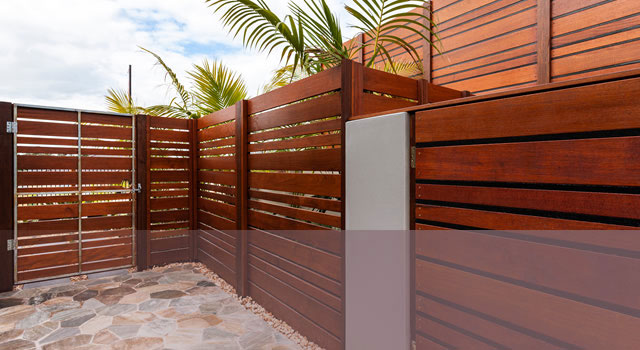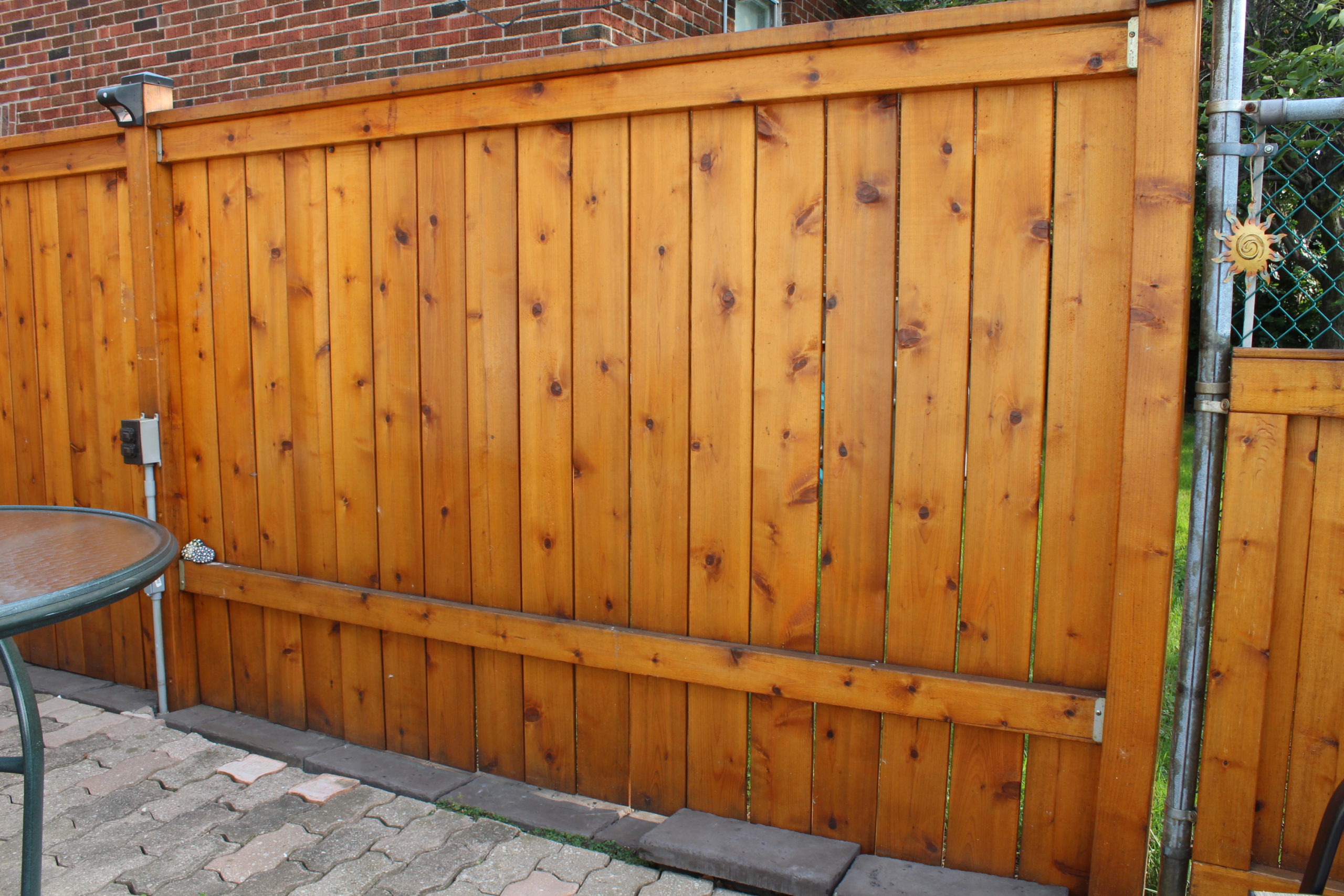

Fence post layout is a crucial part of planning your fence project. Mark all fence post locations before digging any holes to ensure you have the layout that best fits your outdoor space. Please follow the steps below:
- Correctly Mark Your Fence Line
You will need to find your property boundaries and hammer grade stakes 6” inside the boundaries of your fence. Use string to tightly connect your stakes and create your fence line.
- Correctly Mark Your Corner and End Posts
In a fence project, you will have 3 types of posts: line posts, gate posts, and your corner/end posts. You will mark your corner/end posts first because they can only go in the corner positions of your fence line, requiring no guessing on where to place them. Once your corner posts are marked, you will want to mark your gate posts next if you plan on having a gate.
- Correctly Mark Your Gate Posts
To measure the space between your posts, you will want to take the measurement of your gate and add an allowance for your hardware to ensure it fits correctly. You should always consult the manufacturer’s instructions if you have them. Mark your gate posts in their desired location and consider functionality when determining the location.
- Correctly Mark Your Line Posts
The rest of your posts will be line posts as they will run along the span of your fence. You will need to properly space and measure to mark these posts correctly. You should measure the width of your fence panels and the method of attaching panels to your post so that you can perfectly fit as many full panels as possible between posts. For aesthetic purposes, you will want to do your best to have all full panels. Since this does not always happen, we recommend planning for any partial panels to be placed in the farthest rear corner so as to not disrupt the flow of the fence portions that are closer to your property.
- Width of Fence Panels
Typical pre-assembled vertical fence panels are 6×6 ft so preferably your area is divisible by 6, but there are no worries if this is not the case. If you decide on individual components you can have different panel widths. Regardless, use your width measurement for post spacing.

Fence post layout is a crucial part of planning your fence project. Mark all fence post locations before digging any holes to ensure you have the layout that best fits your outdoor space. Please follow the steps below:
- Correctly Mark Your Fence Line
You will need to find your property boundaries and hammer grade stakes 6” inside the boundaries of your fence. Use string to tightly connect your stakes and create your fence line.
- Correctly Mark Your Corner and End Posts
In a fence project, you will have 3 types of posts: line posts, gate posts, and your corner/end posts. You will mark your corner/end posts first because they can only go in the corner positions of your fence line, requiring no guessing on where to place them. Once your corner posts are marked, you will want to mark your gate posts next if you plan on having a gate.
- Correctly Mark Your Gate Posts
To measure the space between your posts, you will want to take the measurement of your gate and add an allowance for your hardware to ensure it fits correctly. You should always consult the manufacturer’s instructions if you have them. Mark your gate posts in their desired location and consider functionality when determining the location.
- Correctly Mark Your Line Posts
The rest of your posts will be line posts as they will run along the span of your fence. You will need to properly space and measure to mark these posts correctly. You should measure the width of your fence panels and the method of attaching panels to your post so that you can perfectly fit as many full panels as possible between posts. For aesthetic purposes, you will want to do your best to have all full panels. Since this does not always happen, we recommend planning for any partial panels to be placed in the farthest rear corner so as to not disrupt the flow of the fence portions that are closer to your property.
- Width of Fence Panels
Typical pre-assembled vertical fence panels are 6×6 ft so preferably your area is divisible by 6, but there are no worries if this is not the case. If you decide on individual components you can have different panel widths. Regardless, use your width measurement for post spacing.


Customer Service
1-855-561-1114

Copyright 2023 Turkstra Lumber Company Ltd. | Privacy Policy | All Rights Reserved












